If you’ve spent some time online, you’ve probably witnessed many instances of trendjacking.
Trendjacking can come in many forms. For example, when people are talking about an event like Thanksgiving, a grocery brand could invite their users to share their favorite or worst Thanksgiving memories involving one of its products.
Or when one brand is in the news and a competitor uses the situation to take a dig at them and make their own company look better.
Injecting your brand into trending conversations and events that originally had little to do with your company is a powerful strategy for winning over audiences and boosting your exposure.
However, there’s a fine line between taking advantage of trends to shine a light on your brand, products, and services and doing or saying something that gets your brand in trouble.
Keep reading to find out:
- How trendjacking can benefit your brand and how to determine which trends to hijack
- Ethical ways to participate in trending topics without incurring any PR risks
- The mistakes to avoid to maximize the success of your trendjacking strategies
Understanding trendjacking
Trendjacking is the art of inserting your brand into popular conversations by creating content around those topics or events to connect with your audience and draw attention to your products and services.
Although it feels new, this marketing strategy has been around for a long time. It’s the same idea behind brands capitalizing on special periods like Mother’s Day, Christmas, and Valentine’s Day to boost awareness, increase sales, and communicate your brand values.
The only difference is that while you can create seasonal content in advance, you can’t always plan which trends you’re going to hijack ahead of time. This is because trends are unpredictable and constantly changing.
You need to be plugged into the news cycle and online culture so you can identify new trends that your brand can quickly jump on before the hype passes and the crowd moves on to a new obsession.
When done right, trendjacking is a potent recipe for:
- massively increasing brand reach and engagement
- attracting followers
- showcasing authenticity
- driving conversions
- appealing to new market segments,
- getting cheap or free publicity
- humanizing your brand
- deepening customer relationships through storytelling
The trends you jack and how you leverage them matter a great deal. If you make the wrong moves, your trendjacking campaign can just as easily fail, or worse, earn you backlash and damage your brand reputation.
Crafting a responsible trendjacking strategy
The beauty of trendjacking is that you don’t have to engineer a new conversation from scratch and spend hours or weeks trying to get people to care about it.
The conversation is already happening, your audience is already passionate about it, you just need to piggyback on that enthusiasm and tailor it to your business.
So how do you use trendjacking as a community marketing tactic responsibly so your brand reaps only the good benefits and none of the nasty potential side effects?
Research and evaluation: Identifying relevant trends for your brand
With trendjacking, relevance is more important than simply jumping on a hot topic. Not all trends will work for your brand or audience and forcing it will only confuse and alienate your audience and make the content appear unoriginal.
For example, an HR firm will find it easy to insert itself into conversations about shows like Succession, Industry, or The Office since they’re based on the corporate world which its audience can easily relate to. However, it may have a harder time connecting its brand to a trending story about power outages.
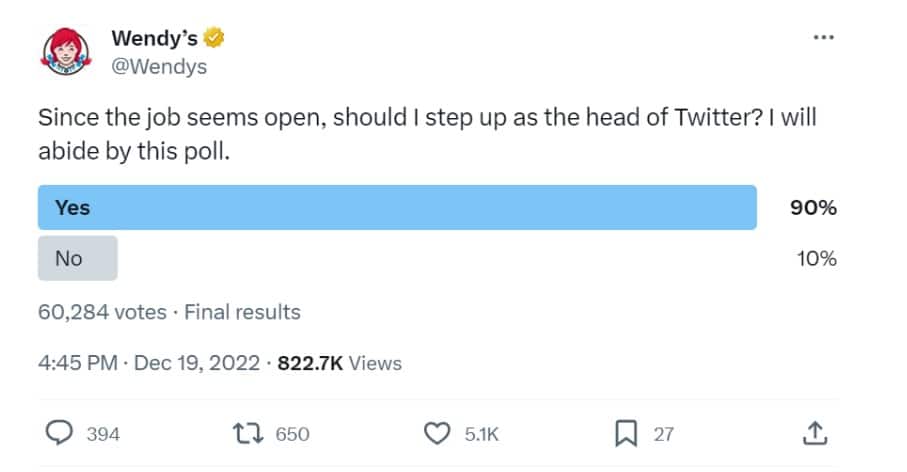
Before making any moves, take some time to research trending topics and make sure you really understand what they’re about. Ask yourself whether the trend you’re considering is in line with your brand image
- Will your audience have the right frame of reference to decode the message you’re trying to pass along via the trend?
- Will it seem like you’re trying too hard to force a connection that isn’t?
- Is there tangible value—think website visits, email signups, social shares, etc.—to be gained from jacking a particular trend?
If you can’t answer these questions positively, walk away and wait for a right that’s right for you.
Aligning trend relevance with brand values and messaging
Your trendjacking efforts will fall flat on its face if you don’t have an interesting angle to add to the conversation. Remember that if the topic is trending, it means tons of people including other brands are already talking about it.
Be creative. Think outside the box. Embrace your boldest ideas. Put your trademark spin on the meme, challenge, or topic. The goal is to stand out while blending in.
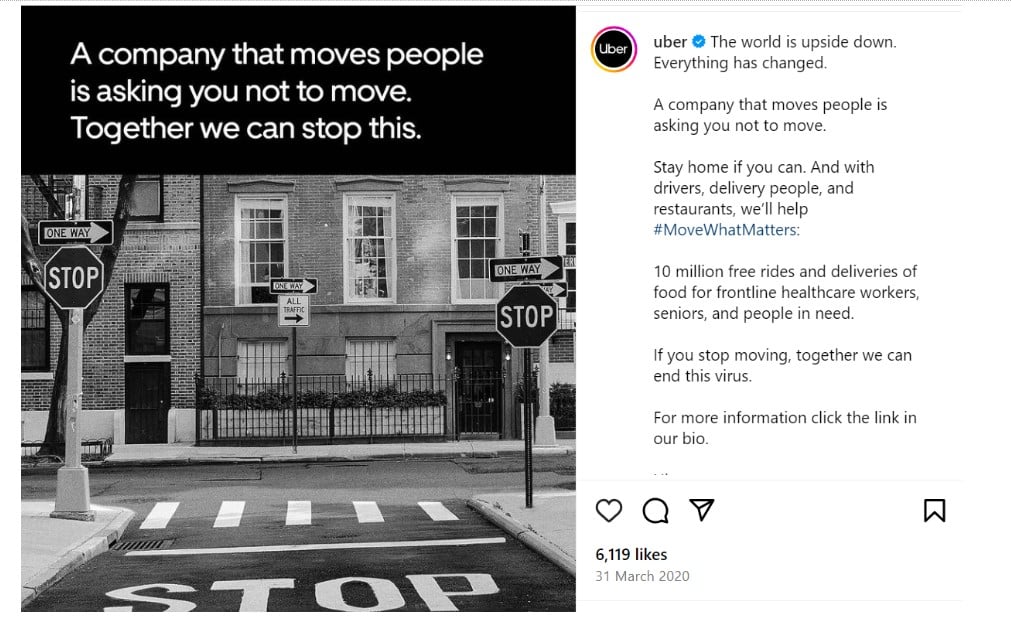
For example, after COVID-19 hit, it was the topic that dominated everyone’s lives, especially during the lockdown. Uber was able to stay top of mind and boost customer trust with its “Thank You For Not Riding” campaign, encouraging passengers and drivers to stop the spread of the virus by staying home.
The content you create should not only align with the trend, it should be consistent with your brand’s identity, messaging, and tone of voice. If your communication style typically drips with humor, your trendjack should reflect that as well except the trend is centered around a tragedy.
Setting boundaries: Knowing when and how to engage
Don’t be like Pepsi which received global backlash when it tried to promote its product and generate engagement by hopping on the Black Lives Matter conversation with its “Live For Now” campaign.
The ad was widely criticized for trivializing and exploiting the protest against police brutality. Pepsi ended up pulling the commercial and issuing an apology.
Unless you plan to offend people and ruin your reputation, you need to be mindful of your trendjacking approach. Your content shouldn’t be tone-deaf or make light of serious issues.
If you’re not sure that you can contribute to a delicate or controversial topic without coming across as insensitive or inappropriate, leave the trend alone. It’s better to not participate than to join in and go viral for the wrong reasons.
Best practices for ethical trendjacking
Here’s how to implement a trendjacking strategy that helps strengthen your online presence, gets you into current conversations, and keeps you from becoming a PR cautionary tale.
Creating authentic and value-driven content within trends
People can always tell when a piece of content feels forced and insincere. Stay true to who you are and what audiences have come to love about your brand.
Refrain from repeating what everyone else is saying. For instance, if there’s a viral challenge or a popular meme, consider how your brand’s custom t-shirts could play a role in that narrative. Could you design a t-shirt that captures the essence of the trend in a fun and respectful way? Do something different with your messaging that speaks to the trend while also reinforcing your brand messaging.
Keep in mind that you’re not restricted to jumping on trending topics in your industry only. You can take advantage of discussions revolving around other industries as long as you can find a genuine way to insert your brand’s voice.
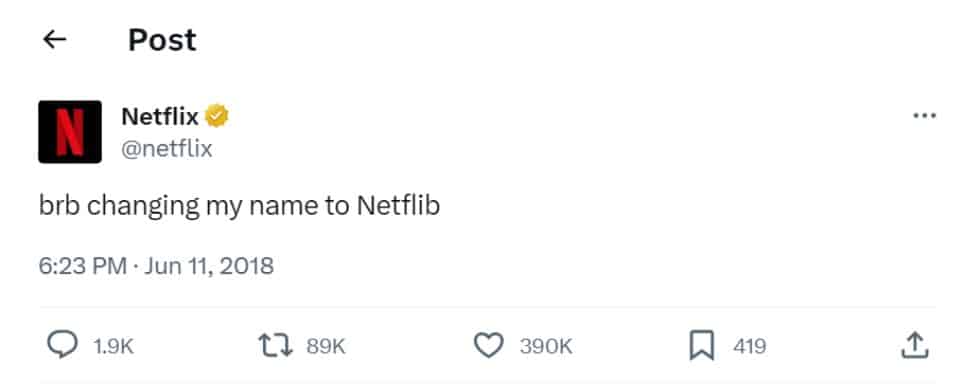
For instance, when IHOP made the short-lived decision to change its name to IHOB, social media erupted with comments. Many brands trendjacked the news including Netflix which seized the opportunity to make a joke about changing its name to Netflib.
Netflix’s tweet amused audiences, earning 390K likes and a ton of engagement, proving that you don’t have to do too much with your trendjacking posts to make them authentic and effective.
Engaging responsibly: Adding value without exploiting trends
The key to using trendjacking as an ethical marketing strategy is to think before you engage. You have to be deliberate about the topics you trendjack and what you bring to the table.
Find a way to add value to the topic. This can include creating advertising campaigns, organizing a fundraiser, posting humorous commentary on social media, writing blog posts, or designing infographics to provide further information about the trending topics.
Don’t wake up one morning and decide to jump on a trend about minority groups or social issues when you never showed that you cared about those communities or topics before then. Rather than getting positive attention, your actions may be seen as tone-deaf or opportunistic.
If you’re going to insert your brand into news stories about controversial subjects such as religion, politics, civil rights, and tragic events, take a principled stand.
Be prepared to walk your talk and handle whatever comes your way as a result because not everyone might be happy with what you have to say.
Monitoring and reacting: Agility in responsibly participating in trends
Before you can trendjack, you first need to know what stories are trending. Staying on top of conversations and breaking news across different channels will allow you to identify emerging trends.
So you can react quickly and come up with valuable and creative responses to the trends that center your customers and brand story.
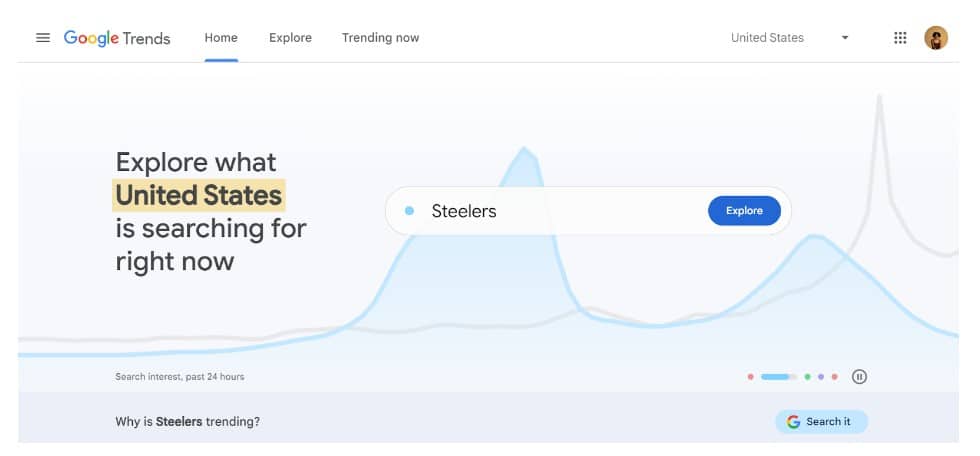
Some of the ways you can stay up to date on trends are by setting up news alerts for brand, competitors, and industry-related keywords and using social listening tools like Mention, Buzzsumo, Sprout Social, and Google
You can also follow influencer marketing trends, use news aggregator tools, track trending hashtags, or even sign up for mailing services and lists that are relevant to your business and audience.
Your work is not done after your trendjacking post goes live. You still need to keep an eye on the audience’s reaction to your content.
If the engagement is positive, you’ll want to keep the buzz going by interacting with the comments people leave you. And if your stunt looks like it’s backfiring, you can quickly pull the plug and take steps to address it before it becomes a full-blown PR disaster.
Navigating challenges and risks of trendjacking
While trendjacking holds immense potential for amplifying brand visibility and improving customer service by showing your audience that you care about them and the things they’re affected by, it is not completely foolproof.
There are risks you need to consider and ethical standards to uphold when jacking a trending narrative to gain exposure for your business.
Potential pitfalls: Common mistakes in trendjacking
Here are some trendjacking blunders to avoid if you want to reduce or escape the dangers of positioning yourself as part of current events and stories.
-
Aggressively promoting your brand
Trendjacking is an indirect brand promotion tactic. The point is to get people to notice and remember your brand because of your contribution to the trend.
If your value-add to the conversation is compelling enough, it will naturally inspire customers to visit your website, request a sales demo, or buy from you. You don’t need to use the trendjacking post to directly sell your product or service. Doing so can make your post seem inauthentic and turn off your audience.
-
Not respecting context
Sometimes, brands are so eager to jump on a trend before the buzz does out that they don’t take the time to properly understand the context behind it. A good example of this is the time DiGiorno Pizza hijacked a trending hashtag #WhyIStayed on Twitter.
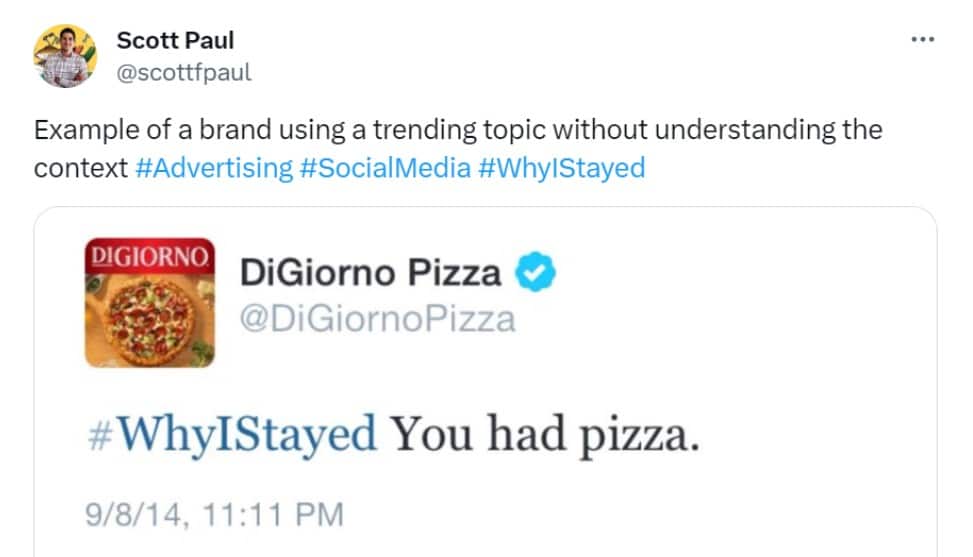
What the brand assumed to be a humorous trend was actually a means for survivors of domestic violence to share their stories and raise awareness about the topic. As you can imagine, DiGiorno’s tweet was not well received.
-
Reading the room poorly
Some events and stories don’t call for a humorous or lighthearted spin. Don’t trendjack just for the heck of it. Know your audience and adapt your messaging to suit their stance and emotions around the trending subject.
No matter how clever you think your commentary is, don’t share it if there’s a chance it’ll be considered to be in poor taste by the majority.
Mitigating risks: Crisis management in trendjacking
If you don’t have a crisis management strategy as part of your brand plan, create one before you embark on a trendjacking campaign. You need to have guidelines for dealing with any potential backlash that may arise, so you don’t end up scrambling and making the wrong moves should you find yourself in the hot seat.
How you approach a crisis to salvage your brand reputation will depend on the specific scenario. Some cases may require you to take down your trendjack campaign and issue a public statement, while others may call for you to stay silent and wait for the heat to pass.
With a crisis communication plan, you can easily adapt to the situation and take strategic action to manage public reactions and outcomes.
Successful trendjacking stories to inspire you
Here are some recent examples of ethical trendjacking campaigns from real-life brands that made a splash for all the right reasons.
-
Ikea Water Bottle Rebrand
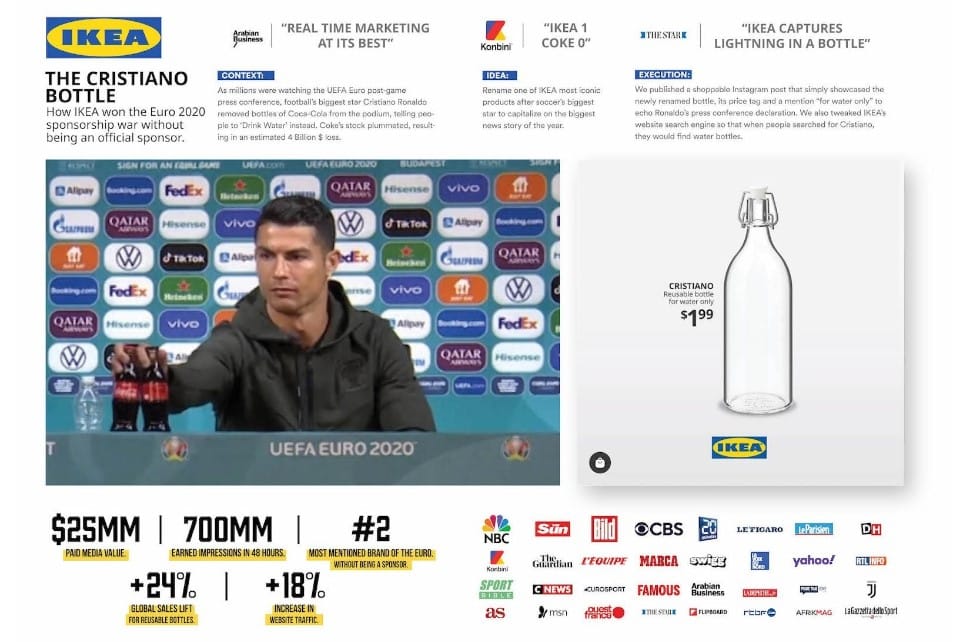
Source: Clios
In 2021, Christiano Ronaldo wrecked Coca-Cola’s market value after he rejected a bottle of Coke and encouraged people to drink water instead in the middle of a press conference for the Euro Championships football tournament.
The story immediately went viral, inviting comments and press mentions from across the globe. Ikea brilliantly hijacked the trend by changing the name of its line of reusable water bottles to “Christiano” and promoting it across social media with the hashtag #Euro2020.
-
UN Women’s Oscar Jab
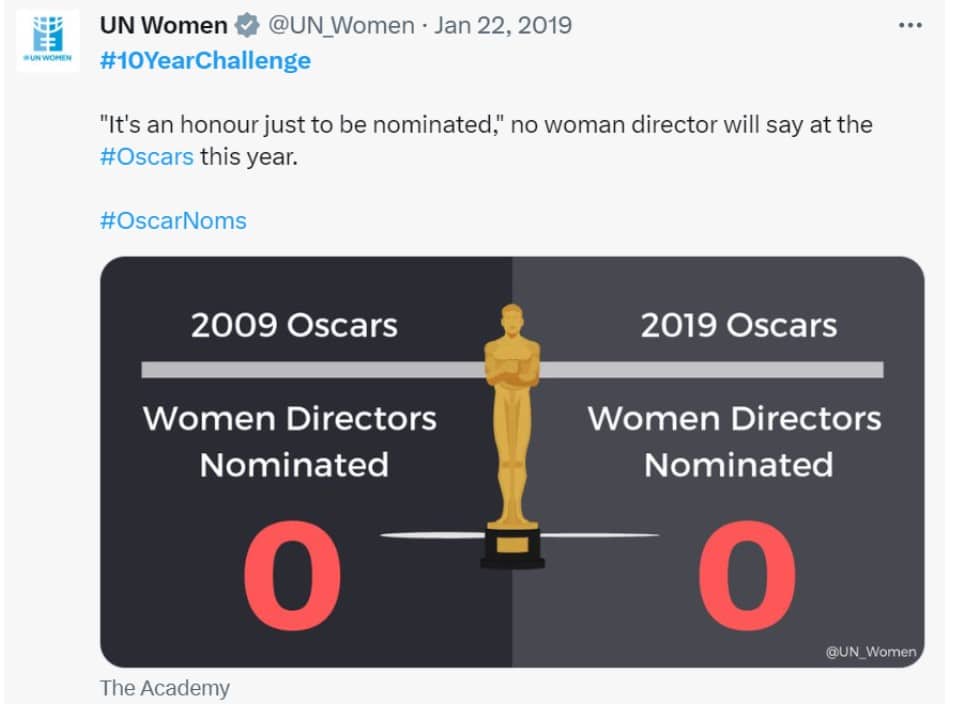
When Facebook inspired the #10yearschallenge by asking users to share a photo of themselves from 10 years ago vs what they look like in 2019, responses poured in from millions of individuals and brands.
UN Women successfully leveraged the trend to spread its message and spark conversations about gender equality and women’s rights. The organization made its #10YearChallenge about the Oscars and the fact that no female director was nominated for the award in 2019, the same as the 2009 Oscars.
-
Budweiser and the Beer Trophy
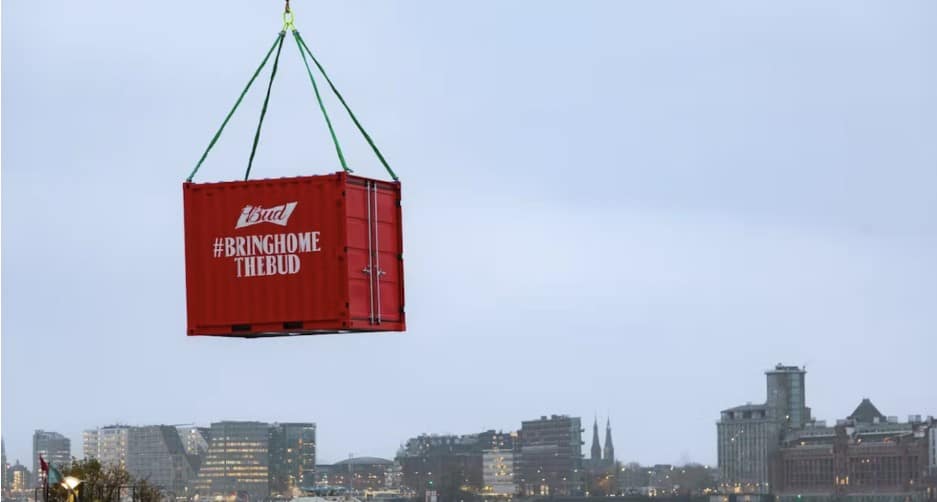
Source: Clios
When Qatar announced that alcohol would be banned from stadiums at the 2022 World Cup, just two days before the games were scheduled to begin, it sent the internet into a spin.
Many football and beer lovers were displeased by this development, including Budweiser, the official beverage sponsor for the competition. At first, Budweiser, reacted by posting a tweet saying, “Well, this is awkward,” which it later deleted.
Then it decided to earn some positive coverage from the trending story by announcing that the winning nation would get to take home all of Budweiser’s unsold beer along with their trophy.
The campaign, cleverly titled “Bring Home the Bud,” dominated the news cycle right up till the end of the tournament.
Supercharge your brand visibility with effective trendjacking
Trendjacking is a high-risk, high-reward digital marketing tactic. Your ability to act quickly and tie your brand to breaking news and evolving trends will determine how impactful your trendjacking efforts will be.
As long your message aligns with the context of each trend and you’re careful about what you say, you can boost your SEO rankings, drive conversions, strengthen brand recall, and engage audiences in real-time without harming your business’ image.








